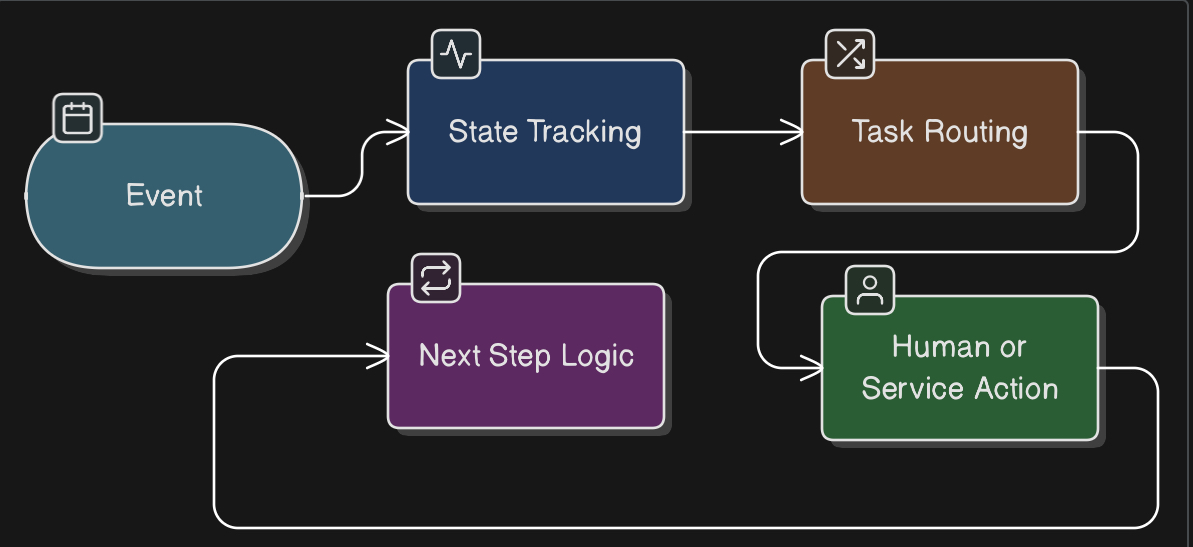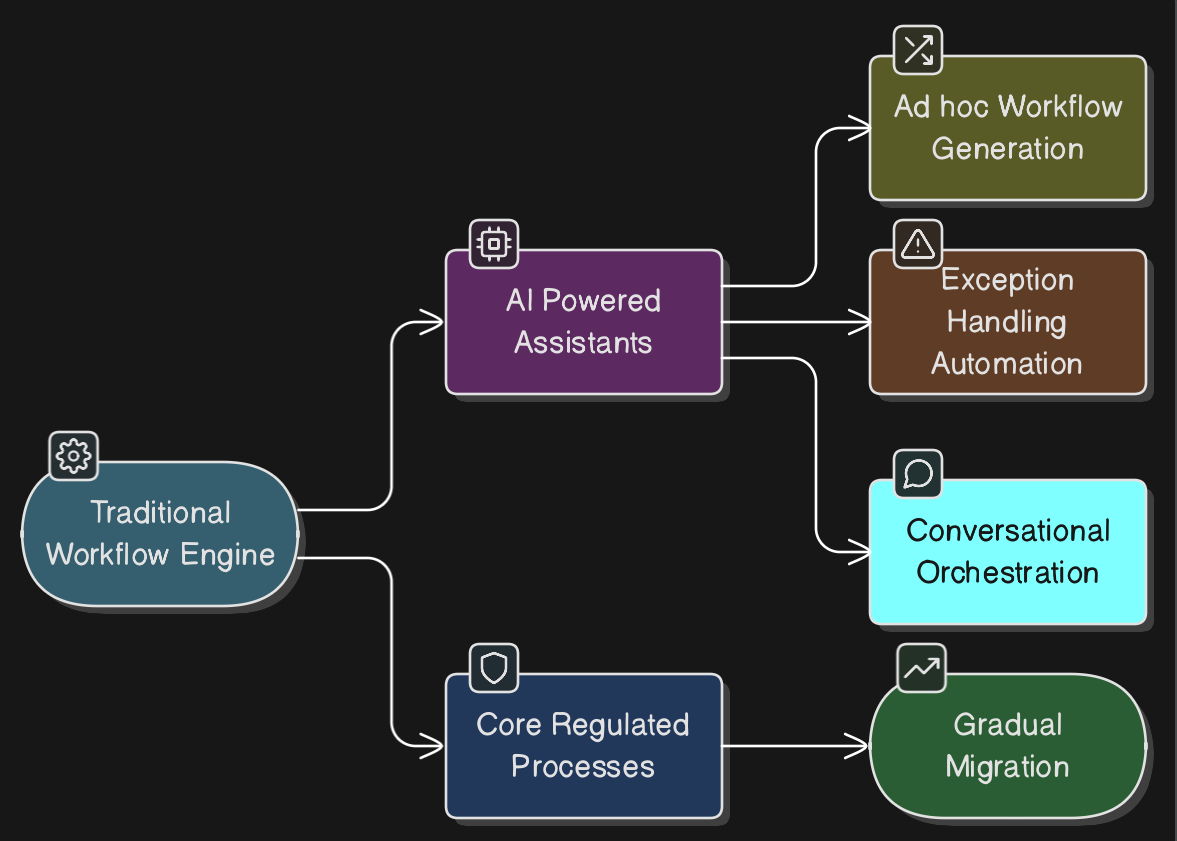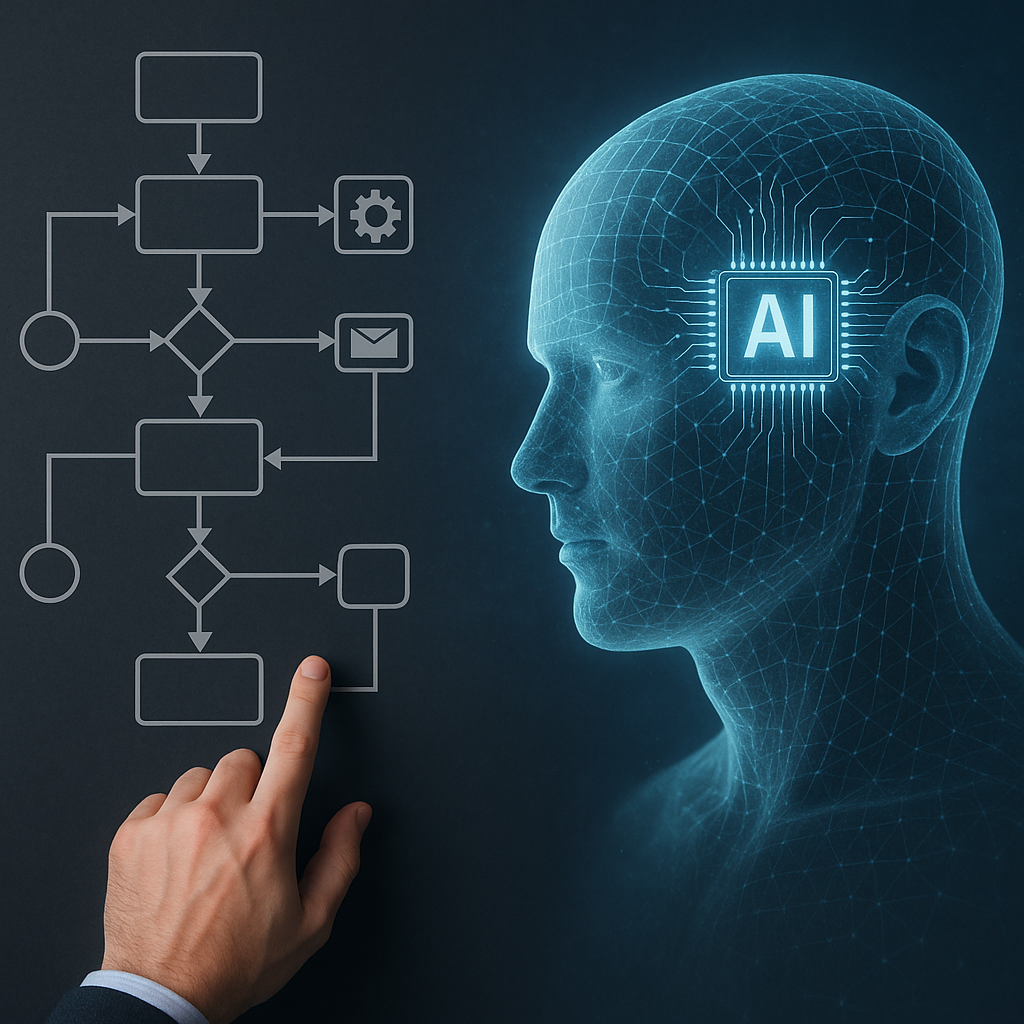Rethinking Orchestration in the Age of Agents
For two decades, enterprises have been buying or building workflow engines: Camunda, Pega, Conductor, Step Functions, Airflow, you name it. These engines promised a way to codify business logic into flows—tasks, approvals, retries, timers, parallel branches—without burying everything in application code.
But here’s the uncomfortable question: if AI agents can increasingly reason about state, make decisions dynamically, and stitch together services on the fly, will we still need these heavy workflow platforms?
What Workflow Engines Do Today
At their core, workflow engines handle three problems:

- State tracking – knowing where you are in a process.
- Routing – assigning tasks to people or services.
- Branching – deciding what happens next based on conditions.
- Auditability – showing a regulator or manager “what happened when.”
These engines are valuable because they reduce chaos and enforce consistency. But they’re also rigid. Every exception means new modeling, new swimlanes, new brittle integrations.
Where AI Changes the Equation
The AI shift introduces capabilities workflow engines never had:
- Dynamic decision-making – instead of hard-coded branches, agents can weigh options in context (e.g., “if SLA is at risk, escalate to chat and auto-draft a customer email”).
- Contextual routing – LLMs can interpret ambiguous requests and map them to the right service or human.
- On-the-fly schema handling – instead of failing on unexpected input, AI can normalize, reformat, or route exceptions.
- Conversational interfaces – users describe goals (“approve claim if employer details are valid”), and the system builds the workflow under the hood.
This means the friction that justifies workflow engines—manual modeling of every edge case—starts to erode.
Likely Disruption Path
Workflow engines won’t disappear tomorrow. They’ll get eaten from the edges:

- Short-term: Workflow engines remain for core, regulated, repeatable processes (claims, onboarding, payments).
- Medium-term: AI assists in exception handling and auto-generates workflows from natural language specs.
- Long-term: We see “workflowless workflows”—agents negotiating tasks dynamically, with audit logs generated retroactively.
Should Enterprises Still Invest?
The real question for CTOs and directors isn’t “will workflows die?” It’s: where should we place our bets over the next 3–5 years?
- Yes, invest if your processes are compliance-heavy, high-volume, low-variance. Regulators don’t trust “the AI decided.”
- Go light if your processes are exploratory, constantly shifting, or involve lots of exception handling. AI orchestration may leapfrog static modeling here.
- Hybrid future: likely, enterprises will keep workflow engines as guardrails, while AI handles the messy middle—exceptions, dynamic routing, user intent.
Checklist for Leaders
Before buying your next workflow platform or sinking another year of engineering into orchestration, ask:
- Where are our processes brittle? (high exception rate = candidate for AI)
- What do regulators demand? (audit trails may anchor you to structured engines)
- Do we need developer-centric or business-centric tooling?
- How fast are our processes changing? (fast-change areas benefit from AI)
- What’s our exit strategy? (lock-in with a workflow vendor may age badly in 3 years)
- Are we exploring “workflowless workflows”? (AI-driven orchestration with logs as the artifact, not the plan)
The Punchline
Workflow engines won’t vanish overnight. But their monopoly on process orchestration is over. AI is teaching us that orchestration can be discovered, generated, and adapted dynamically instead of hard-modeled upfront.
For enterprises, the safest posture isn’t to double down on today’s workflow monoliths. It’s to invest just enough to stay compliant, while experimenting aggressively with AI-driven orchestration at the edges.
In other words: keep your workflows, but don’t worship them. The future may belong to agents who don’t even call themselves workflows.


Add a Comment